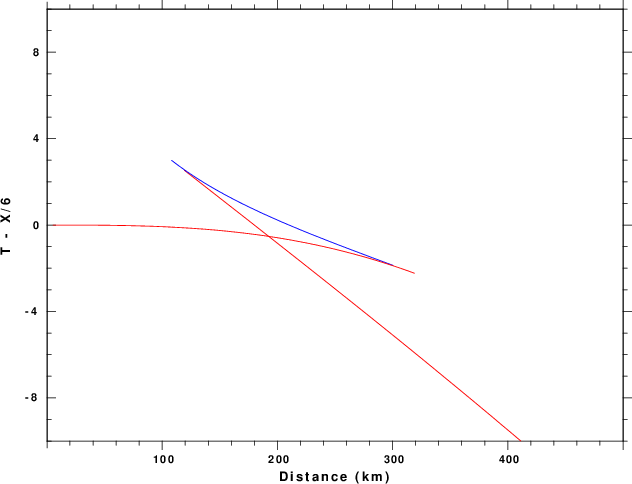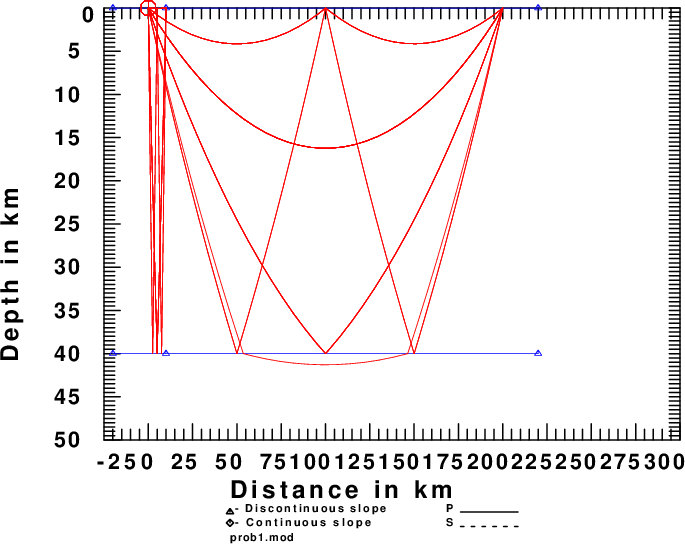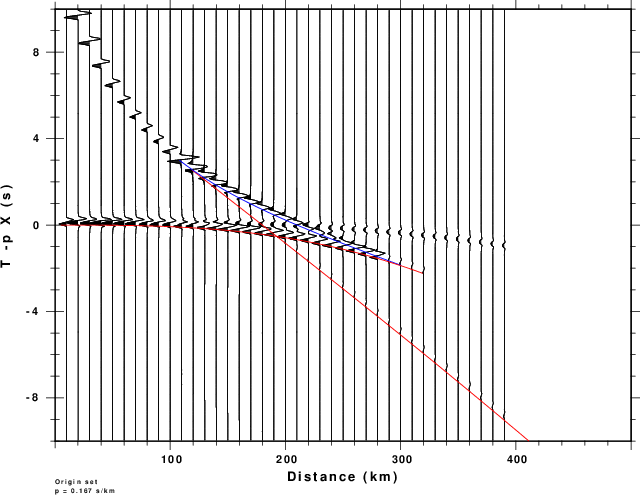


It is assumed that you have access to Comptuer Programs in Seismology. If you ahve the VirtualBox distribution, you have everything that you seed. For the 2014 distribution of Lubuntu32 (login: cps ; Password PROGRAMS.330) for the 2015 distribution (login: cps ; Password: cps).
You will use the following programs from Computer Program sin Seismology: cprep96, cseis96, cray96, cpulse96, gsac, plotnps and convertfrom the ImageMagick package. The shell script that you are given will create a PNG file that you can place in a Work/LibreOffice document.
To learn the command options of the CPS codes, us the -h flag, for example, cprep96 -h.
chmod +x DOC1
./DOC1
display *.png
You will create a file RAY_1.png and a 03_1.png. I have also created a figure from the travel times computed in Problem 2 and
superimposed that onto the synthetics. Here are the figures.
 |
|
 |
 |
layer Thickness VP(top of layer) VP(bottom of layer) VS = 1/2 VP Layer 1: Thickness 40 km 6.0 6.8 layer 2: Thickness 2 km 6.8 8.0 Layer 3: Thickness 30 km 8.0 8.375 Layer 4 Thickness 40 km 8.0 8.5